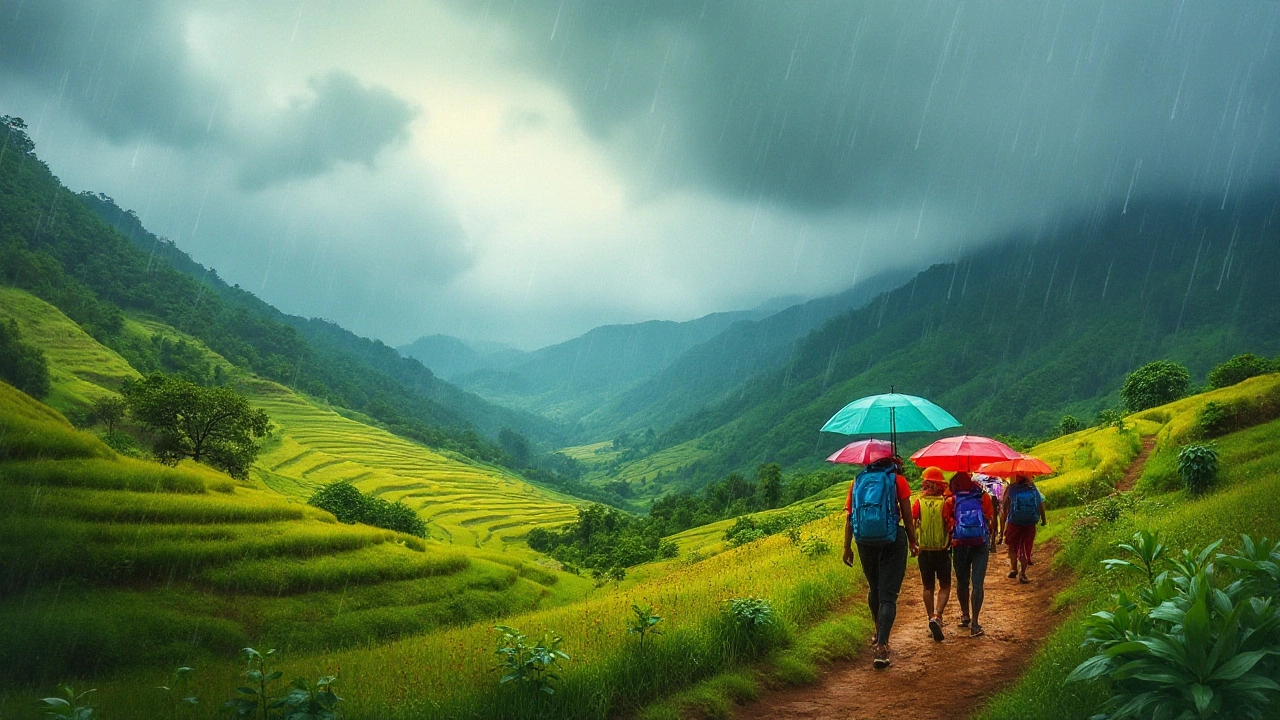Monsoon in India: What to Expect and Where to Go
When the monsoon, the seasonal rain pattern that drenches South Asia and fuels India’s ecosystems, farms, and rivers arrives, India doesn’t just get wet—it comes alive. Millions wait for it. Farmers bank on it. Wildlife wakes up because of it. This isn’t just weather—it’s a rhythm older than cities, deeper than religion, and more powerful than any calendar. The monsoon season, the period from June to September when moisture-laden winds sweep across the Indian subcontinent turns dry riverbeds into rushing streams, makes forests hum with frogs and birds, and turns dusty roads into mirrors of sky and tree.
Travelers often hear warnings about floods, delays, and slippery trails. But skip the monsoon, and you miss India’s most vivid transformation. In the Western Ghats, waterfalls crash down like liquid silver. In the Sundarbans, mangrove forests turn into labyrinthine waterways where tigers swim between islands. In Rajasthan, the desert blooms with wildflowers you won’t see any other time of year. The monsoon trekking, hiking through India’s hills and forests during heavy rains, often with fewer crowds and richer greenery is not for everyone—but those who go say it’s the most raw, real version of the country they’ve ever seen. And yes, you need the right gear: quick-dry clothes, waterproof bags, and boots that grip wet rock. But you don’t need to avoid it. You just need to plan smarter.
Some places thrive in the rain. Kerala’s backwaters become quieter, more reflective. The hills of Coorg and Ooty smell like wet earth and tea leaves. Even the Taj Mahal looks different—softened by mist, surrounded by lush lawns, with fewer tourists snapping photos. Meanwhile, cities like Mumbai and Delhi get flooded, roads stall, and power cuts happen. That’s why the best monsoon experiences aren’t in the urban jungle—they’re in the wild ones. Jungle camps in Madhya Pradesh, forest lodges in Assam, and hidden retreats in Maharashtra open their doors just when others shut theirs. These aren’t luxury escapes. They’re real, muddy, alive experiences where you hear the rain on the roof, smell the soil waking up, and see monkeys splash through puddles like they’ve been waiting all year.
And then there’s the wildlife. Monsoon is when leopards come down from the hills to drink. When deer give birth in the tall grass. When birds you’ve never heard of start singing at dawn. The monsoon wildlife, animal behavior and sightings that peak during India’s rainy season, especially in national parks and forest reserves is not guaranteed—but it’s more likely than in the dry months. Guides know where to look. They know which trails dry fastest. They know which animals are most active after a downpour. You don’t need to be an expert. Just show up with curiosity and a raincoat.
What you’ll find below are real stories from people who chose the rain over the sun. They didn’t wait for perfect weather. They didn’t cancel their trips. They went anyway—and came back with photos that made others jealous, stories that made others curious, and a deeper sense of what India truly is when the clouds break open. Whether you’re thinking about trekking through the Himalayas in July, camping near a waterfall in Karnataka, or just want to know if it’s safe to visit Goa in August, the posts here give you straight answers. No fluff. No fear-mongering. Just what works, what doesn’t, and where to go when the sky opens up.
